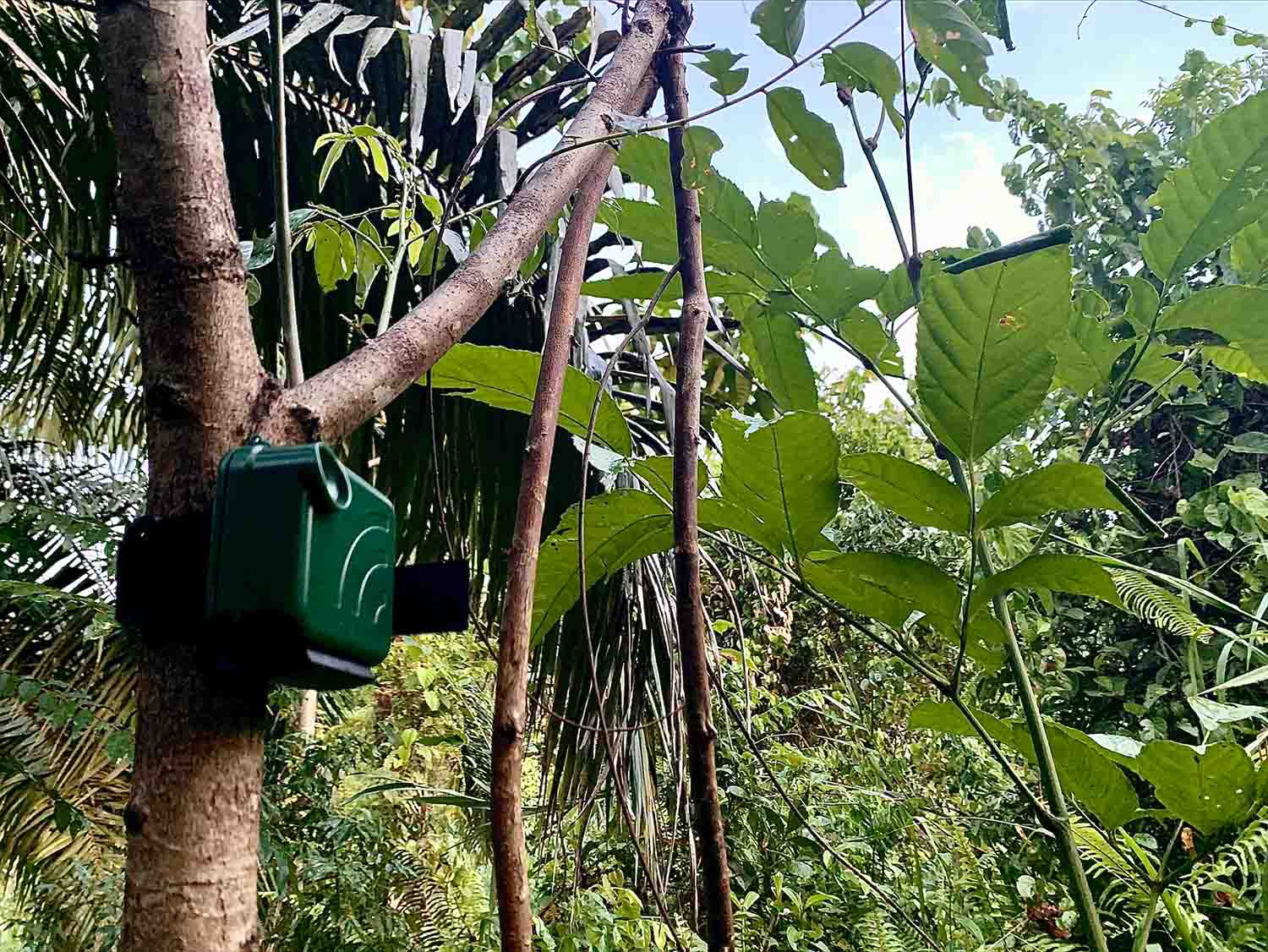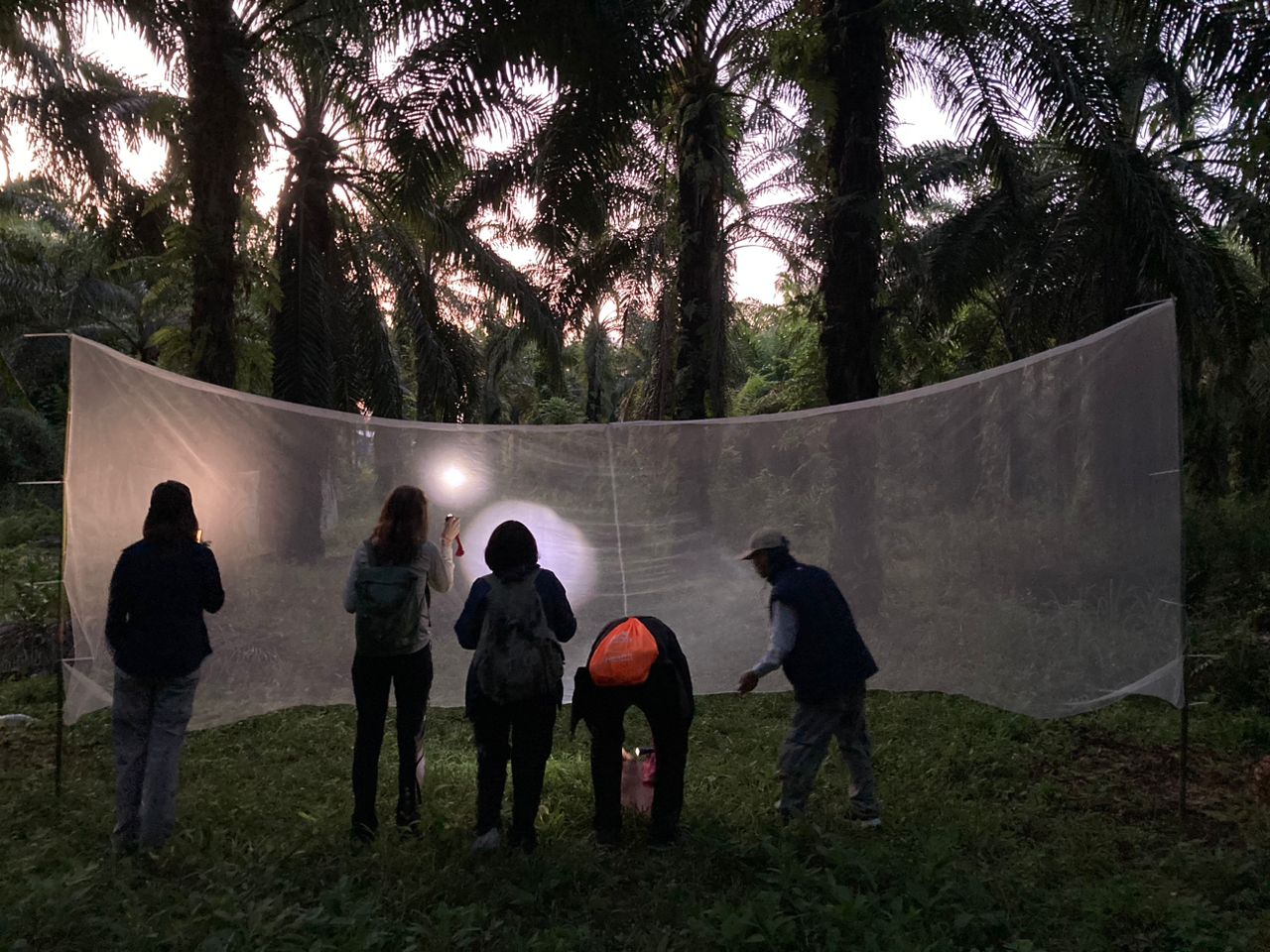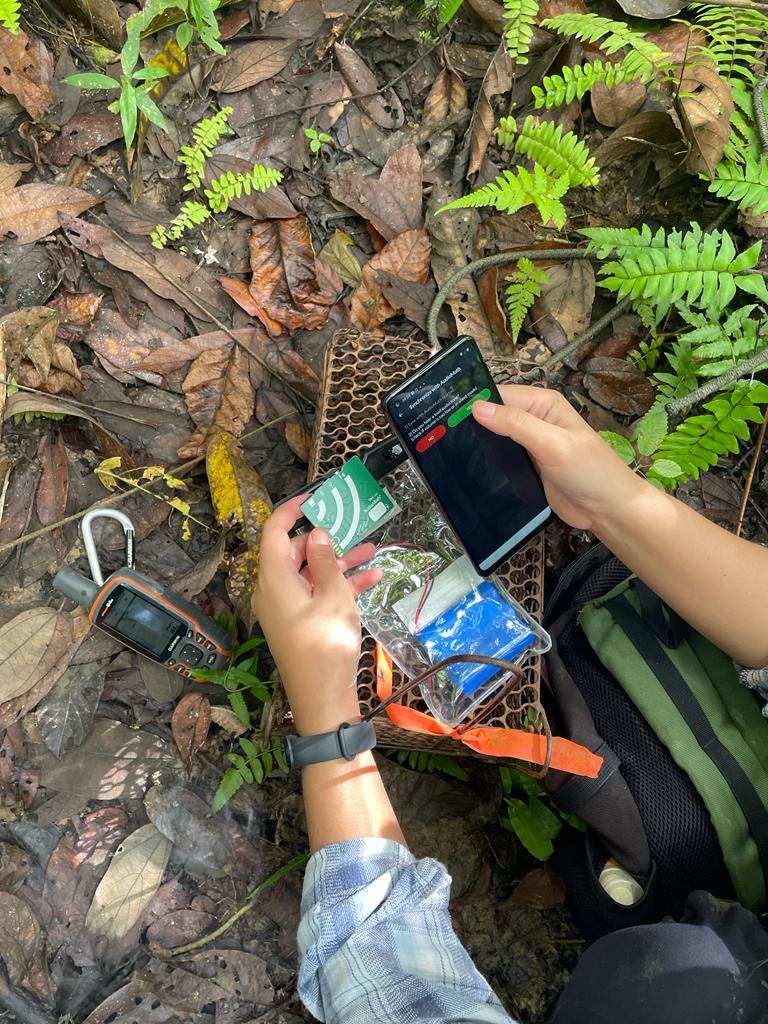Microphones could help track disease risk in the wild
A joint Press Release from University of Glasgow, Danau Girang Field Centre (DGFC) and Rainforest Connection
28 February 2023, Kota Kinabalu: Researchers have shown how sounds recorded by low-cost microphones could be used to help track infectious disease risks in the rainforest and in other rapidly changing landscapes.
The study, funded by the Wellcome Trust, the Royal Society and the US Department of State, and published in Trends in Parasitology, discusses how listening to the sounds of an ecosystem can inform our understanding of factors that drive the spread of disease between animals and people.
The findings are the result of a partnership between researchers from the University of Glasgow, Danau Girang Field Centre and Rainforest Connection, an NGO which uses sound recording to monitor endangered species and send real-time alerts to prevent poaching and illegal logging in the rainforests.
To track illegal activity, Rainforest Connection uses microphones to detect human noise in the forest – not specifically speech, but listening for sounds of activity like chainsaws, gunshots, or movement through the forest.
The researchers describe how acoustic monitoring – a cost-effective, non-invasive tool – could also be effectively used to strengthen early warning systems and improve disease surveillance.
“By recording the sounds that animals make, we can detect changes in wildlife that could impact human disease risk; for example, tracking the changes in frequency of animal calls to identify mass mortality in wildlife due to a disease outbreak,” said Dr Kimberly Fornace from University of Glasgow. “Acoustic data could be used to detect changes in the location or behaviours of animals in areas where zoonotic diseases (like malaria, yellow fever, rabies, trypanosomiasis and Rift Valley fever) exist and could pose a risk to other humans and animals. While acoustic monitoring won’t replace existing field-based methods used to track disease risk, we believe it could be a novel and useful tool when used in combination with current methods,” added Fornace.
“Passive acoustic monitoring is typically used in wildlife conservation to investigate population dynamics and behavioural trends of animals that make noise – including sound we cannot hear, like echolocation,” said Dr Milena Salgado Lynn from Danau Girang Field Centre. “More specifically, our work demonstrates how acoustic monitoring can be used to monitor the spread of zoonotic malaria from monkeys to mosquitos to people. For mosquito-borne diseases such as malaria, detection of human activity at times when mosquitos are most active could indicate heightened disease risk and be used to identify where people are exposed to infectious mosquitos. Within the Malaysian rainforest and plantation areas, we have now set up an acoustic monitoring grid to track when monkeys are moving into areas with mosquitos,” added Salgado Lynn.
Emilia Johnson, from the University of Glasgow’s School of Biodiversity, One Health and Veterinary Medicine, said: “Emerging infectious diseases pose a significant burden on global public health, and there is a need to better understand diseases that crop up at the boundaries where human activity and wildlife habitats meet. “Sound recording provides an opportunity to collect and analyse useful data in real-time and over very broad scales; in this way, acoustic surveys can complement existing surveillance methods and offer important new insight into the dynamic ecosystems that underpin infectious disease epidemiology,” concluded Johnson.

AudioMoth in forest for acoustic monitoring to evaluate risk factors for monkey malaria (Plasmodium knowlesi) (Credit: Emilia Johnson)

Mosquito catches in Kalabakan district, Sabah (Credit: Addy Samsudin)

Programming the AudioMoth to collect data at DGFC (Credit: DGFC)
For more information on this press release, please contact:
Dr Benoit Goossens, Danau Girang Field Centre
Email contact@dgfc.life
